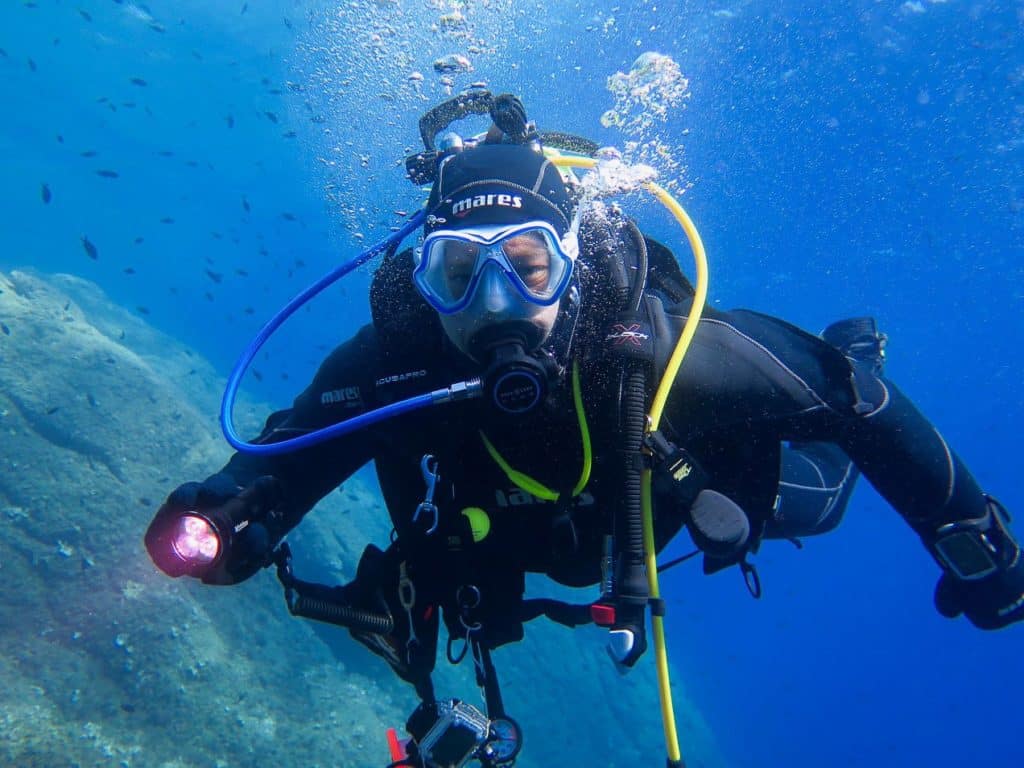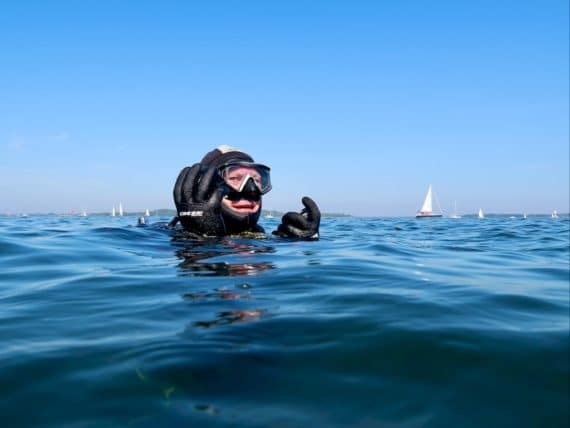Scuba diving agencie: how to get there?

Not always easy to find your way in the many scuba diving agencie. Might be good to better understand them, here is a summary of the situation
To set the scene
We must first of all point out that sports and recreational diving have developed considerably after World War II. Divers then regrouped to develop standards (the essential exercises to achieve according to the levels) and procedures (the way to carry out the training) which will soon become federations or scuba diving agencie.
There are currently about ten international scuba diving agencie that teach diving, each according to its procedures, each with its own goals.
It may be noted that two major types of diving have developed.
Diving with a vocation mainly “recreational”
We find PADI, NAUI, SSI to name but a few
Scuba diving agencie with a vocation mainly “sport” or even “technical”
We meet there CMAS and for technical training, IANTD or TDI-SDI
Changing attitudes and markets mean that diving is increasingly becoming a commercial activity, apart from diving schools. Each scuba diving agencie then tries to offer in its catalog all the facets of the diving.
It would be intellectually dishonest to pretend that one training is better or worse than another. Each training course targets a specific dive consumer market. Some people will only want to dive in warm waters not more than 20 meters deep, others will want to dive anywhere at any time or at depths exceeding 40 meters.
The different diving profiles are very distinct and require different training to combine skill, pleasure and safety.
The 5 largest global scuba diving agencie listed by date of creation are:
1 – NAUI (National Association of Underwater Instructors), founded in 1959 in California. A US based scuba diving agencie.
Basically, Naui can be considered as a non-profit scuba diving agencie. However, this concept is evolving and the creation of NAUI services group marks a turning point towards a truly commercial activity. At NAUI, the instructor is independent but can if he wants to be attached to a school or a dive shop.
It gives the courses respecting the standards and procedure but has the pedagogical freedom to be inspired by sources other than NAUI to enrich or diversify the training.
The NAUI teaching material is mainly in English and sometimes in a local language but not for the entire literature or teaching material. Each diver candidate chooses his instructor, follows the training and at the end of the training when it is successful, the monitor registers his candidate at NAUI. The candidate receives his diver’s card which is valid for life. It is quite possible to start training in one country, to continue it with another instructor in another country and to finish it with the first instructor. The diver is always certified in relation to the place of his training. In other words, total and successful training in the Red Sea will give certification that will require further training if the diver decides to dive into a lake or quarry in northern Europe.
Training is very broadly the same everywhere in the world with the potential exception of local pedagogical freedom. The prerogatives of the levels are exactly the same everywhere in the world.
2 – CMAS (World Confederation of Underwater Activities), created in Italy in 1959. A european based scuba diving agencie.
CMAS may be considered as a “Top” or “transversal” scuba diving agencie composed of entities from different countries. The notion of founding member exists as for example the FFESSM for France, the FEBRAS for Belgium etc …
There are also other members who are not founders.
CMAS is clearly a non-profit and global scuba diving agencie, although its roots lie in Western Europe.
The CMAS establishes the basic standards and procedures of the diver 1 * to the diver 4 * and the instructor 1 * to the instructor 3 *
It describes the exercises to be carried out and the theory to be known as well as the prerogatives of each level.
It also issues two-sides certification cards, which on the one hand take the level and mention of CMAS and on the other hand, information specific to local federations.
Each country where CMAS is present is through a local federation.
FFESSM in France, FCAS in Cuba, FAST in Tunisia, CUA in China, etc.
There are, however, some exceptions for “international” federations
Each federation adheres to CMAS standards and procedures, but sometimes adapts them to local specificities or wills. This means that two divers with a level X certification card may have received different training from one country to another and may have different prerogatives from one country to another. Normally each candidate must join the local federation through a club membership in order to benefit from the training.
Each federation has mostly its own teaching material which can be very different from one federation to another.
Although having a non-profit ideology CMAS training is not for free. Often the instructors are volunteers and certify through their diving club that is member of a local federation. At CMAS the instructor is not meant to be independent although it sometimes happens. Training is usually done over a year but not always.
3 – PADI (Professional Association of Diving Instructors), founded in 1966 in Illinois
PADI is the typical example of the scuba diving agencie that has introduced standardization and therefore with little or no pedagogical freedom.
Its purpose is clearly commercial and its instructors are trained in this idea.
Teaching materials are important and available in 26 languages.
Overall a diver will be trained the same way anywhere in the world and the prerogatives at identical level will be the same all over the world.
The pedagogical methodology is inspired by the practices found in large companies. All instructor is independent but may also be employed by a school or a dive shop. The certifications are centralized.
The notion of specialty is very important and enriches a level of diving to obtain the next level.
Padi is the largest scuba diving agencie and training organization in the world. Padi was one of the first organizations to offer part of the training from online media or DVD.
Each candidate diver is obliged to purchase the pedagogical kit of his level.
4 – SSI (Scuba Schools International), founded in 1970 in Colorado
SSI scuba diving agencie offers standardized training similar to PADI, the same everywhere in the world.
A large library of educational media is available in different languages. SSI is clearly a commercial channel for the training of divers and instructors. Some courses are available online and sometimes the first modules are free which can convince a candidate to continue his training with SSI.
Each diver candidate can purchase the training kit from their level but is not obliged to do so.
SSI has in some countries the possibility of certifying candidates in indoor pits such as Nemo 33 in Belgium.
Like PADI, SSI offers many “specialty” certifications that help educate the diver to a higher level.
The SSI instructor may be independent or part of a commercial structure, but it can not certify a candidate directly, it must pass through an accredited center.
5 – IANTD (International Association of Nitrox and Technical Miscellaneous), established in 1985 in Florida
IANTD stands out strongly from the scuba diving agencie mentioned above because they focus on the technical and more physical side of the training, hence the term often used as a “TEK” diver
Although there are “recreational” courses, they are nevertheless highly tinted with technical notions / nitrox and are often the gateway to continue with technical training. The diver can do all his curriculum at IANTD and progress to the level of the monitor.
Unlike other diving associations, IANTD does not offer any training for children.
The choice is certainly not easy but criteria can help us such as: the objective of diving (sports or recreation), pedagogy training, proximity to a center, affinities with instructors, etc. And of course costs.
… What a great day 😃
Helene
Did you like this article ? Want to stay informed and know everything about your favorite hobby?
Do not hesitate to leave a message, and share on your social media







